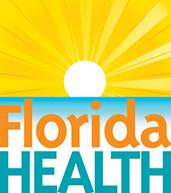It's a New Day in Public Health.
The Florida Department of Health works to protect, promote, and improve the health of all people in Florida through integrated state, county, and community efforts.
Access and Functional Needs Resources
Contact the Bureau of Preparedness and Response
- 850-245-4040
-
Mailing Address
Florida Department of Health
4052 Bald Cypress Way, Bin A23
Tallahassee, FL 32399
This page contains additional information about specific populations, planning guides, and/or response resources. Where possible, documents link to source sites to ensure the most current information.
Children and Families
Community and Faith-Based Organizations
- National Resource Center on Advancing Emergency Preparedness for Culturally Diverse Communities—A clearinghouse of information on emergency preparedness in culturally diverse communities. The site includes a link to sign up for an E-newsletter.
- Rural Health Information Hub—An information portal that is a product of the U.S. Department of Health and Human Services' Rural Initiative.
Elderly Populations
- Caring for Elders During Disasters: Tools and resources to guide and support local communities in their efforts to develop and sustain a continuum of care for elders during disasters. These tools include:
- A Guide for Community-Based Planning and Step by Step Companion Toolkit—The documents provide a comprehensive guide to communities for engaging elder care stakeholders in the preparedness, response and recovery cycles of all-hazards disaster management.
- PowerPoint presentations from the Step-by-Step Companion Toolkit
- Core Planning Team Pre-Workshop Conference Example
- Community-Based Workshop Example
- Concept and Objectives Meeting Example
Emergency Preparedness for Older Adults - Tips from the Red Cross that can help you know what to do before, during and after a disaster or emergency.
Kidney Disease/Dialysis Population
- Kidney Community Emergency Response Coalition—Site provides resources for patients, providers, and emergency management/community partners.
- Emergency Management and Dialysis
Persons with Disabilities
- Responder Preparedness for Persons with Autism includes preparedness information to assist responders when working with persons with autism spectrum disorder in a disaster setting.
- 18 Emergency Preparedness topics formatted to be friendly to deaf, blind and limited sight populations.
- Disaster Behavioral Health
- Florida Deaf Resource List
- Autism and First Responders: Seeing Beyond the Smoke
- Disability Training for Emergency Planners from the Ohio State University Nisonger Center
- Disability Training for Responders from the Ohio State University Nisonger Center
Best Practices
- Agency Capacity Assessment Tool from agencies who serve these various groups to better identify sustainment needs during an event and the agency's capacity to meet those needs.
- Best Practices for Communication with Vulnerable Populations: A Transportation and Emergency Management Toolkit
- Communication Resource Guide
- County Planning Assessment Tool that assesses level of planning to meet identified need considerations for each population.
- Emergency Response for People who have Access and Functional Needs: A Guide for First Responders - National Terrorism Preparedness Institute at St. Petersburg College. This site provides emergency personnel guidance and resources for assisting people who have access and functional needs during the response and recovery phases of an emergency.
- CDC Public Health Workbook To Define, Locate, and Reach Special, Vulnerable, and At-risk Populations in an Emergency
- At-risk Populations eTool—A companion to the At-risk Populations Workbook. The purpose of this tool is to help you create a Community Outreach Information Network (COIN) to reach at-risk populations in an emergency. Developed by the United States Department of Health and Human Services, Centers for Disease Control and Prevention, Office of Public Health Preparedness and Response.
*Note: Links to resources outside the Florida Department of Health are provided for information only. Their inclusion does not constitute endorsements by the department. The department is not responsible for content on any linked website. All attempts have been made to link to reliable sources, but sites and URLs are subject to change or have technical malfunctions without warning.
Back to Access and Functional Needs
*Note: This page contains materials in the Portable Document Format (PDF).



Connect with DOH